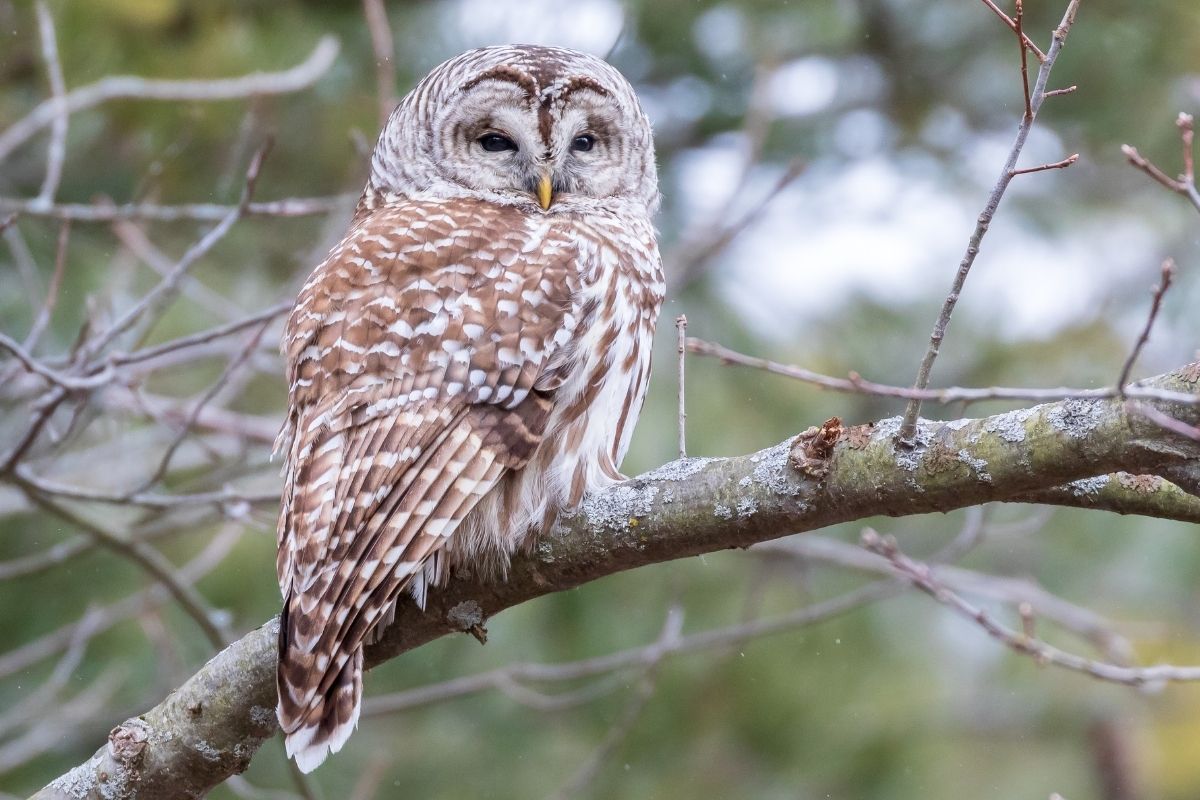by Priscilla Feral and Dara Reid
Opinion piece for the CT Mirror
Starting in October 2020, Barry the barred owl became a focal point for New York City’s birdwatchers, captivating their hearts. That’s why so many Central Park goers were heartbroken when she died after being struck by a vehicle in August 2021.
A necropsy found potentially lethal levels of rat poison in Barry’s bloodstream, putting her at risk of a fatal hemorrhage even without the collision. The level of poison in her liver could very well have impaired her ability to fly and possibly avoid the collision, the report suggested.
Barry’s fame put a spotlight on the poisons that people use to kill mice, rats and other mammals they consider pests. Known as second-generation anticoagulant rodenticides, once ingested, SGARs work by thinning the blood and causing the target animal to slowly bleed to death. SGARs are also deadly to the many wild animals who prey on rodents.
The truth is these poisons have been harming and killing wildlife all the way up the food chain for a long time and a ban on their use in Connecticut is long overdue. Senate Bill 239 is a step in the right direction. While the Environmental Protection Agency started requiring all rodent poison to be sold in containerized stations in 2011, largely to prevent children and pets from eating the poison pellets, the restriction does not prevent the injury or death of wildlife that comes across a poisoned rat or mouse.
Connecticut’s own wildlife rehabilitators see the deadly effects rodenticides have on innocent animals almost every day. Many of the birds of prey they receive are suffering from the effects of these poisons, as well as the foxes, coyotes, bobcats, bears, weasels and raccoons they care for.
Some can be nursed back to health; others are not so lucky and die horrible deaths. Ironically, these predatory animals are a natural and effective form of rodent control yet by hunting and consuming poisoned rodent prey, the predators themselves fall victim.
Wildlife in Crisis Care and Conservation in Weston, the largest wildlife rehabilitation center in the state, has had entire families of hawks and owls brought to the center dying from these unnecessary poisons. Mange has become endemic in fox and coyote populations due to the build-up of rodenticide in their tissues. While mange does occur naturally, recent research suggests that the widespread use of anticoagulant rodenticides weakens the immune systems of animals, making them more susceptible to mange.
Maureen Murray, director of Tufts Wildlife Clinic in North Grafton, Massachusetts, has witnessed a steady increase in the number of birds of prey that come in with rodenticides in their systems —some with lethal levels. In her 2020 study, 100 percent of the red-tailed hawks tested positive for exposure to anticoagulant rodenticides.
To protect wildlife in our midst, people need to manage their behavior, not animals. In other words, rodent “problems” are people problems. It’s up to homeowners or renters to find out where the mice or rats are coming in, plug holes in the house or around windows, take away food and water sources and clean out nesting sites.
In 2020, California became the first state in the country to impose an all-out ban on SGARs with a few exceptions such as warehouses used to store foods for human or animal consumption; agricultural food production sites; factories; breweries; wineries; medical facilities; and drug and medical equipment manufacturing facilities.
Legislative efforts can move along at a snail’s pace. Connecticut’s wildlife doesn’t have time to waste. It is imperative that residents stop using rodenticides immediately as the statewide ban on SGARs moves through the legislature. There is no such thing as a safe rodenticide.
Priscilla Feral is president of Friends of Animals. Dara Reid is executive director of Wildlife in Crisis.

